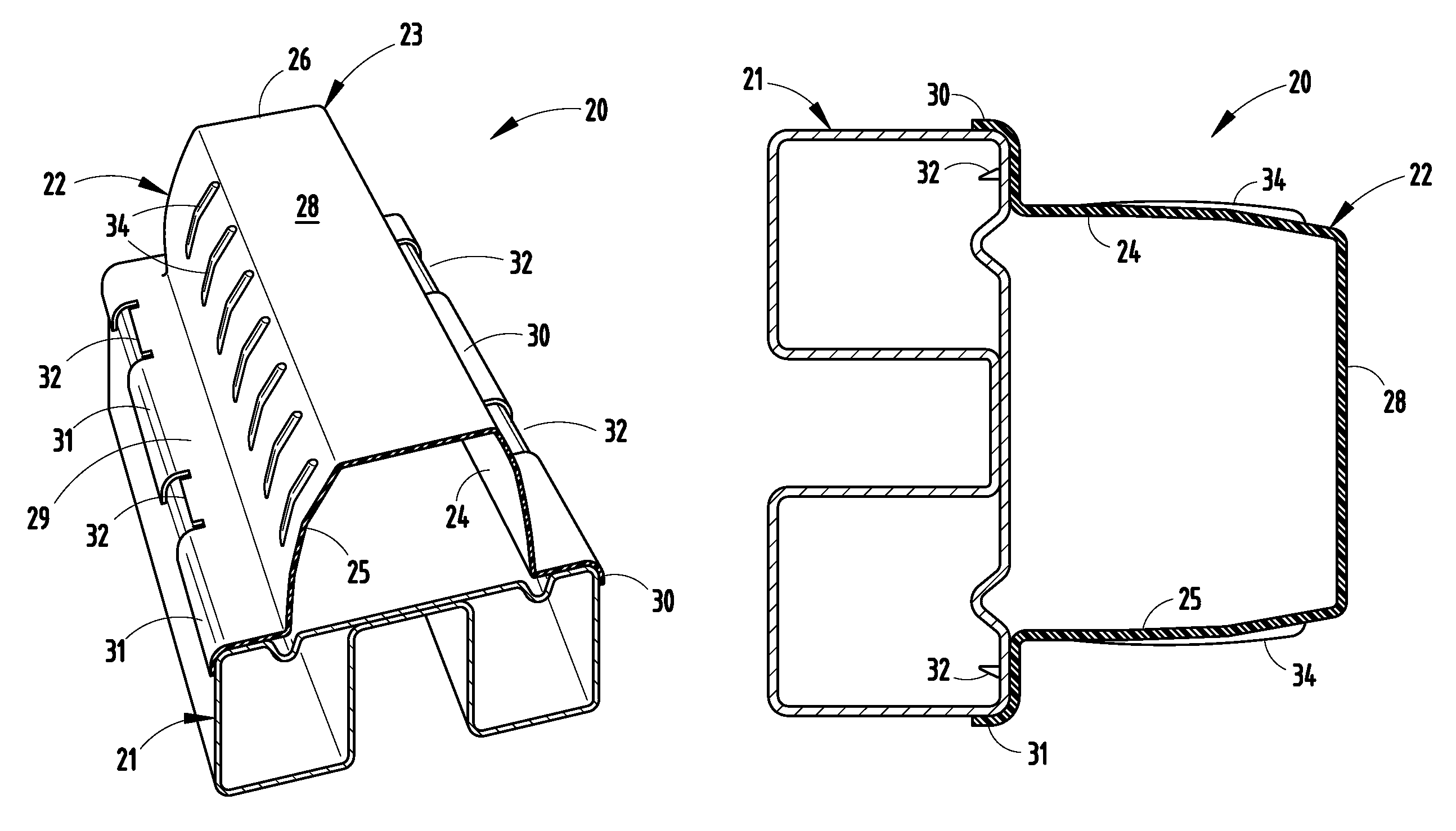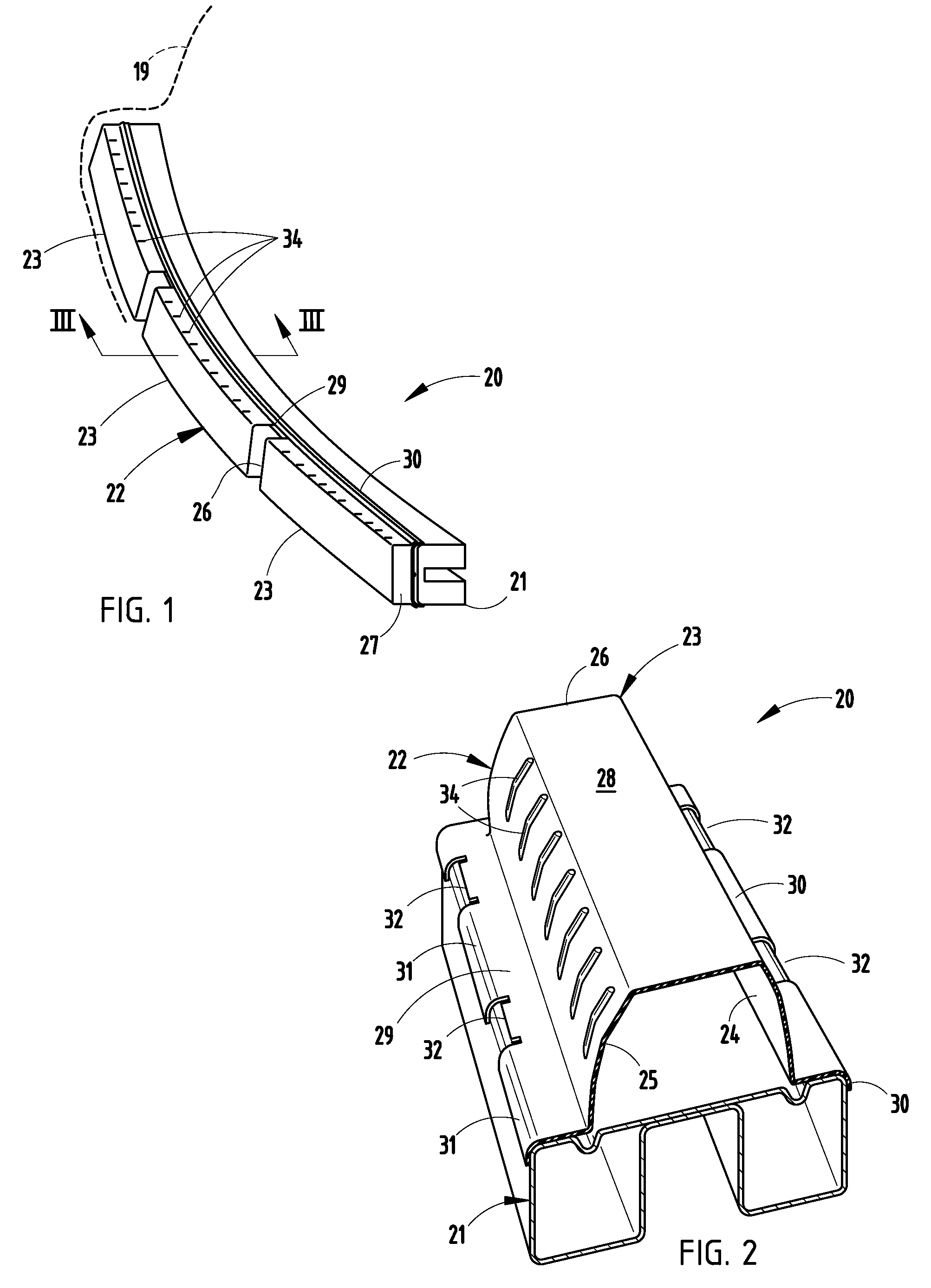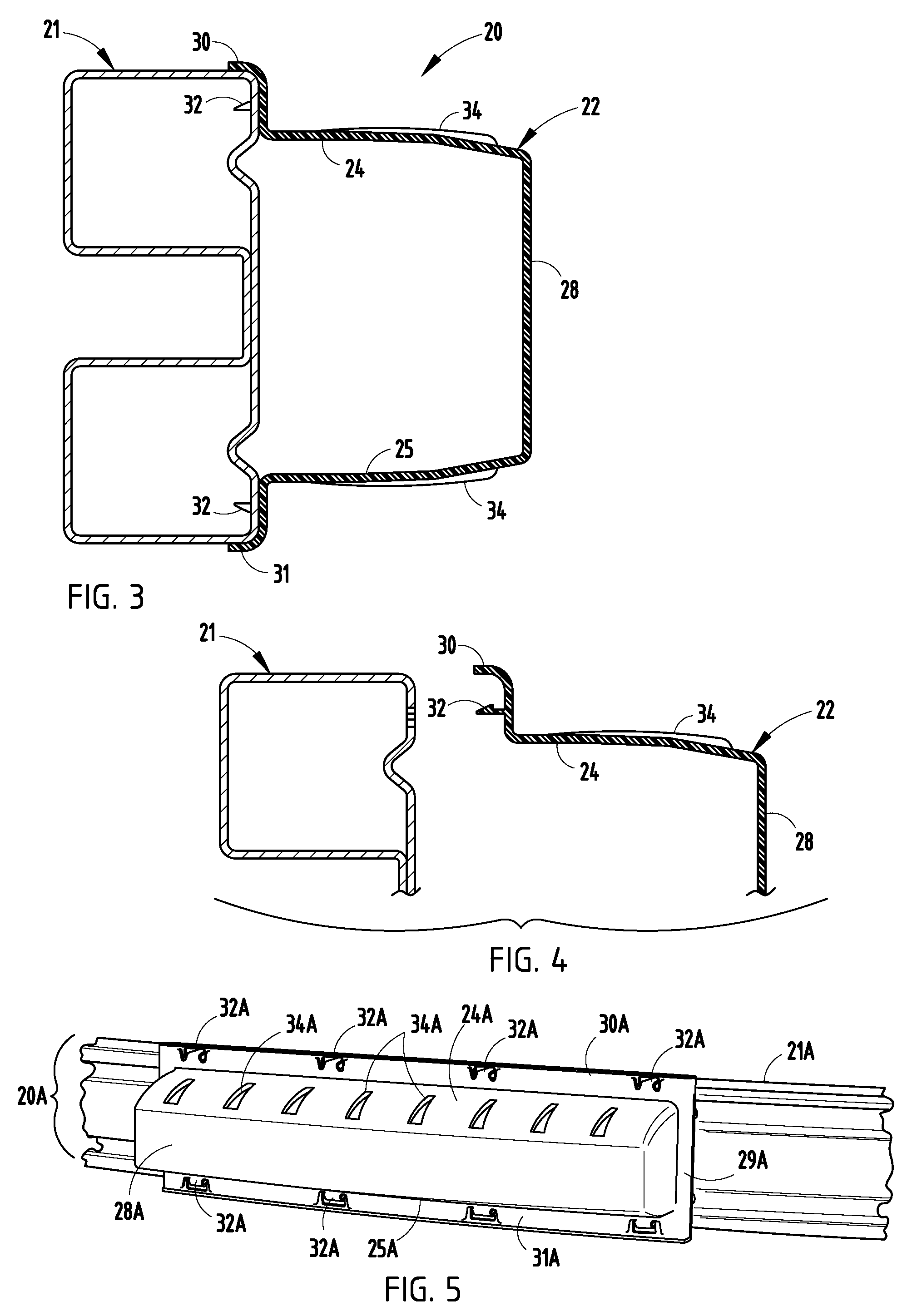Energy absorber with sidewall stabilizer ribs
a technology of stabilizer ribs and energy absorbers, which is applied in the direction of bumpers, vehicle components, vehicular safety arrangements, etc., can solve the problems of conflicting design requirements, affecting the moldability of parts, and adding to the cost of dies and mold cycle times and maintenance, so as to prevent premature collapse
- Summary
- Abstract
- Description
- Claims
- Application Information
AI Technical Summary
Benefits of technology
Problems solved by technology
Method used
Image
Examples
Embodiment Construction
[0021]A vehicle bumper system 20 (FIG. 1) includes an elongated steel B-shaped reinforcement beam 21 with ends adapted / configured for mounting to a vehicle frame, and further includes a polymeric energy absorber 22 abutting or parallel to a front surface of the reinforcement beam 21 and positioned under (and supporting) the vehicle RIM fascia 19. (It is contemplated that the energy absorber 22 could be connected to and supported by the fascia 19 and / or to the beam 20.) The energy absorber 22 includes three (or more or less) longitudinally-elongated hollow crush lobes 23 configured to crush and absorb energy upon a vehicle crash. Specifically, the crush lobes 23 each include interconnected wall structure forming a box shape (often called a “crush box”), including a top side wall 24, a bottom side wall 25, end walls 26-27 and a front wall 28. The energy absorber 22 further includes a frame comprising a rear wall 29 and top and bottom flanges 30-31 for retaining the crush lobes 23 to t...
PUM
 Login to View More
Login to View More Abstract
Description
Claims
Application Information
 Login to View More
Login to View More - R&D
- Intellectual Property
- Life Sciences
- Materials
- Tech Scout
- Unparalleled Data Quality
- Higher Quality Content
- 60% Fewer Hallucinations
Browse by: Latest US Patents, China's latest patents, Technical Efficacy Thesaurus, Application Domain, Technology Topic, Popular Technical Reports.
© 2025 PatSnap. All rights reserved.Legal|Privacy policy|Modern Slavery Act Transparency Statement|Sitemap|About US| Contact US: help@patsnap.com



